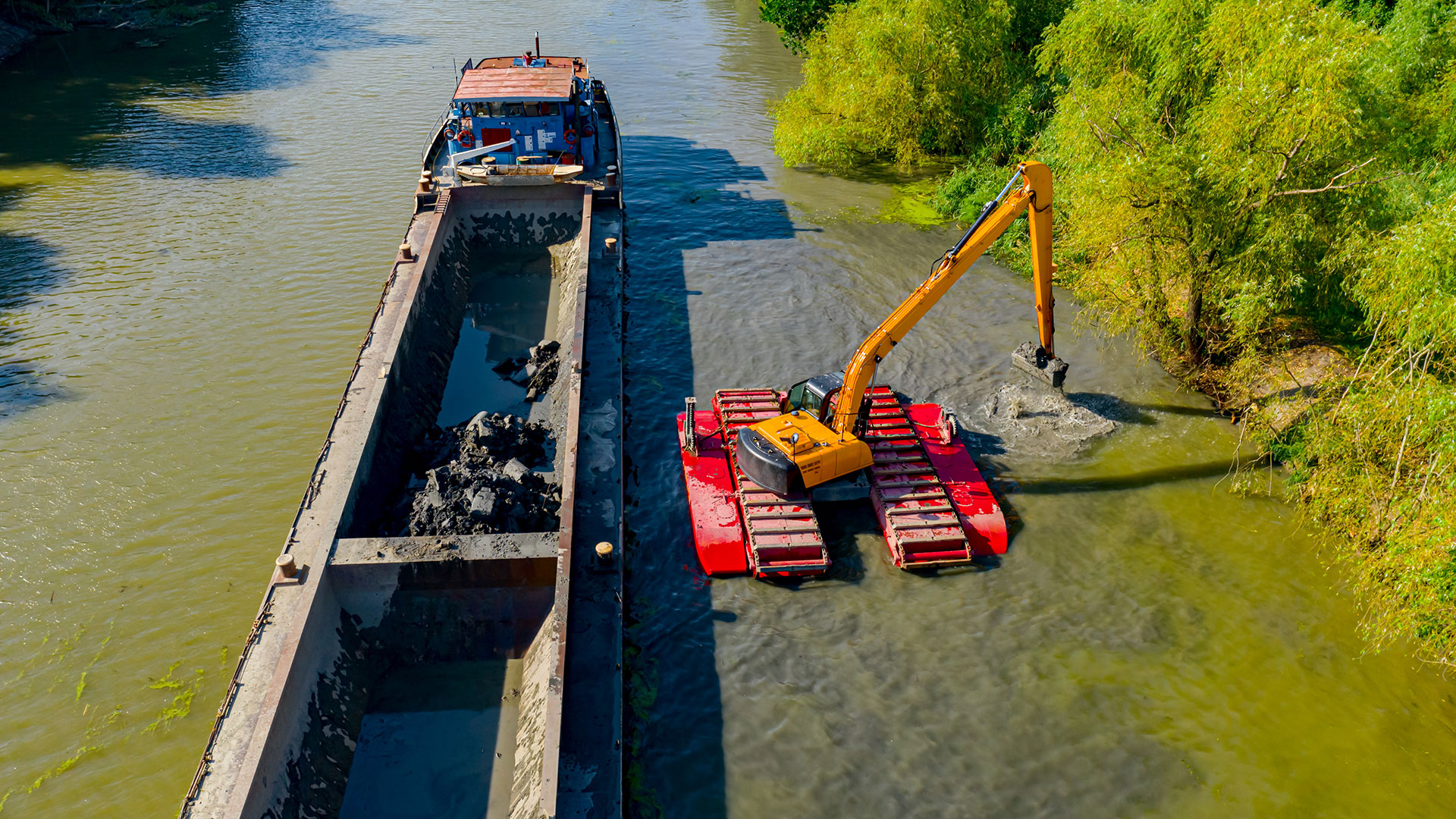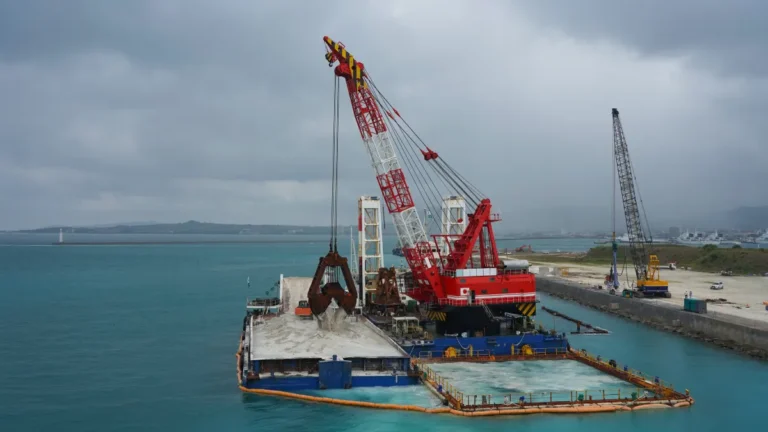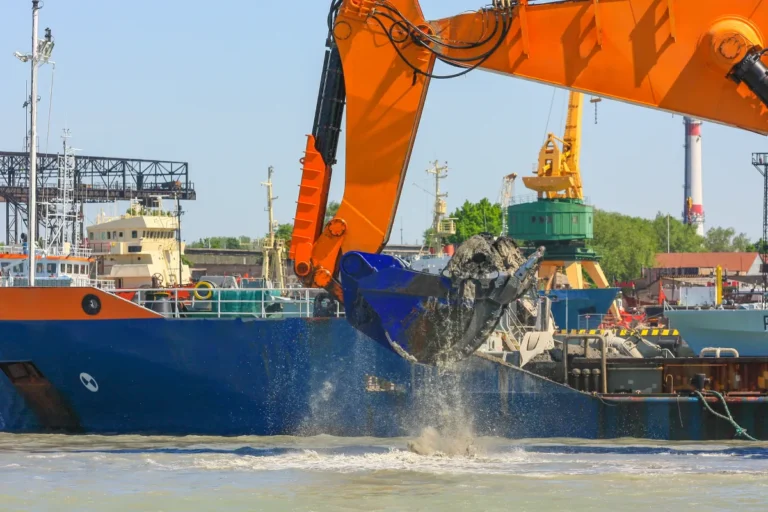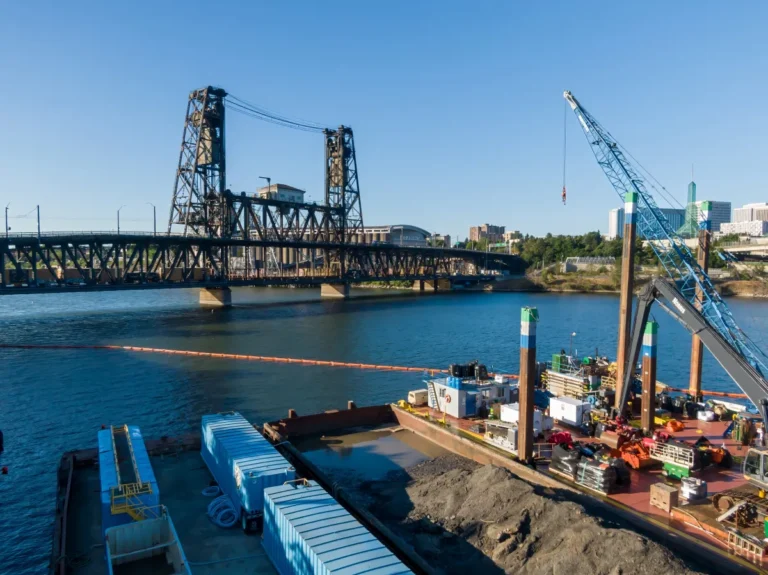River dredging is an essential process for maintaining waterway depth, preventing flooding and supporting aquatic ecosystems. Over time, sediment accumulation, storm runoff, and human activity can obstruct natural river flow, impacting navigation, water quality, and local wildlife. By systematically removing excess sediment and debris, dredging for rivers helps restore channel capacity, ensuring safe passage for commercial vessels, recreational boats, and municipal water supplies. Additionally, dredging for lakes and rivers plays a crucial role in environmental restoration, helping to eliminate pollutants, control erosion, and improve overall water health.
Despite its benefits, river dredging presents significant safety challenges for both workers and the surrounding environment. Heavy machinery operation, unpredictable water conditions, and exposure to hazardous materials increase the risk of workplace accidents, making proper safety protocols essential. At the same time, improper dredging practices can disrupt aquatic habitats, release contaminants, and degrade water quality. To mitigate these risks, strict safety measures must be enforced at every stage of the dredging process. By implementing proper training, protective equipment, and environmentally responsible dredging techniques, operators can ensure that dredging for rivers and lakes is both effective and sustainable.
Regulatory Framework for River Dredging Safety
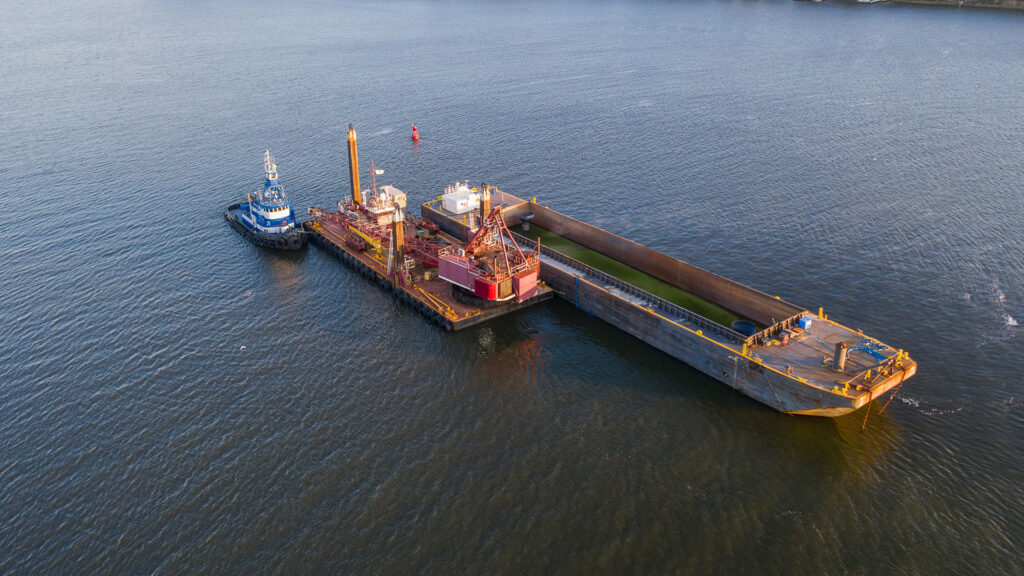
Overview of National and International Regulations Governing Dredging Operations
River dredging is subject to strict regulations at the national and international levels to ensure safety, environmental protection, and compliance with water management policies. In the United States, agencies such as the U.S. Army Corps of Engineers (USACE) and the Environmental Protection Agency (EPA) oversee dredging operations and set guidelines to prevent water pollution and habitat destruction. Additionally, the Occupational Safety and Health Administration (OSHA) enforces worker safety standards, ensuring that dredging crews operate under conditions that minimize risks.
Organizations like the International Maritime Organization (IMO) and the London Convention regulate dredging activities internationally to prevent marine pollution. Countries worldwide implement their environmental laws that dictate where and how dredging for rivers and lakes can be conducted. These laws often require permits, impact assessments, and sediment management plans. Adhering to these regulations ensures that dredging projects align with both safety and sustainability goals.
Compliance Requirements for Worker Protection and Environmental Safety
To meet regulatory standards, river dredging operations must follow comprehensive compliance protocols designed to safeguard both workers and ecosystems. Worker protection requirements typically include the mandatory use of personal protective equipment (PPE), adherence to dredging equipment safety protocols, and participation in certified training programs. These measures reduce the likelihood of accidents related to heavy machinery operation, unstable sediment, and hazardous material exposure.
From an environmental standpoint, compliance involves sediment testing, water quality monitoring, and ecological impact assessments before and after dredging for lakes and rivers. Regulations often require the use of containment measures, such as silt curtains, to prevent the spread of dredged material and reduce turbidity. Additionally, proper disposal or reuse of dredged sediment must follow strict guidelines to prevent contamination and habitat disruption. Failure to comply with these safety and environmental regulations can result in legal penalties, project delays, and long-term damage to aquatic ecosystems.
The Role of Regulatory Agencies in Monitoring and Enforcing Safety Protocols
Regulatory agencies play a crucial role in ensuring that river dredging projects adhere to safety and environmental standards. Through site inspections, compliance audits, and permitting processes, agencies monitor dredging activities to confirm that best practices are being followed. The USACE and EPA, for example, oversee dredging for rivers and lakes by issuing permits, reviewing environmental impact reports, and ensuring that mitigation measures are in place.
In addition to enforcement, agencies provide guidance and resources to improve industry compliance. They establish dredging guidelines, conduct research on sustainable practices, and introduce new policies based on technological advancements and environmental data. By holding dredging companies accountable and promoting responsible dredging techniques, regulatory agencies help balance the economic and environmental aspects of maintaining navigable waterways.
Worker Safety Measures in River Dredging
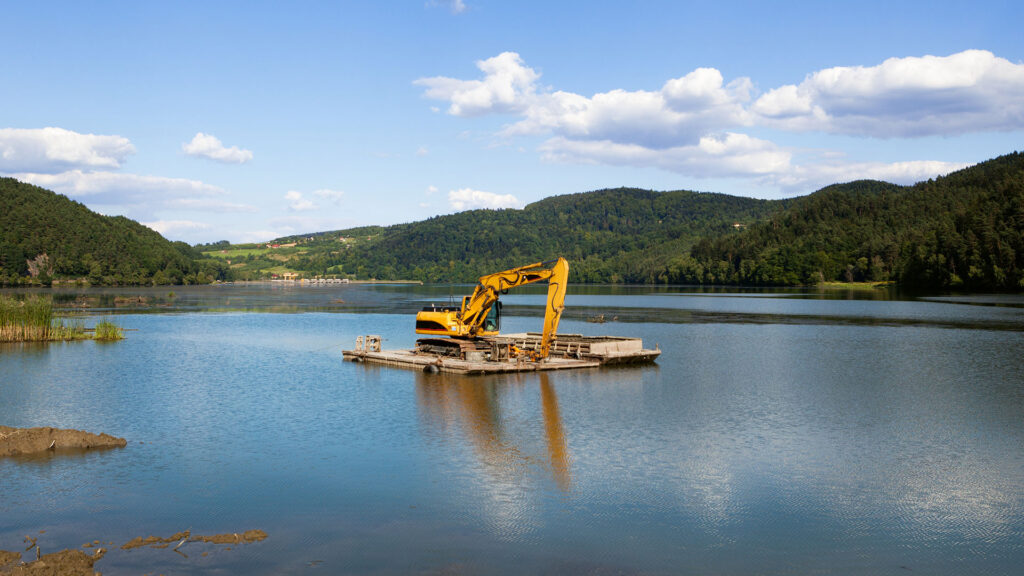
Personal Protective Equipment (PPE): Essential Gear for Dredging Operations
Ensuring worker safety during river dredging begins with the proper use of personal protective equipment (PPE). Operators and crew members must wear specialized gear to protect against physical, chemical, and environmental hazards. Standard PPE for dredging includes hard hats, high-visibility clothing, steel-toe boots, and gloves to safeguard against heavy machinery and debris. Additionally, workers handling sediment or hazardous materials may require respiratory protection, chemical-resistant suits, and safety goggles to prevent exposure to contaminants.
In dredging for rivers and lakes, life jackets or personal flotation devices (PFDs) are mandatory for workers operating near or on the water. The risk of accidental falls into fast-moving currents or deep water makes buoyancy support a critical component of PPE. By equipping workers with the necessary protective gear, dredging operations can significantly reduce the risk of injury and exposure to harmful substances.
Training and Certification Requirements: Ensuring Worker Competency in Handling Dredging Equipment
Proper training and certification are essential for maintaining a safe work environment in river dredging operations. Workers must undergo specialized training to operate heavy dredging machinery, handle sediment containment systems, and respond to emergencies. Certifications from organizations such as the Occupational Safety and Health Administration (OSHA) and the Maritime Administration (MARAD) ensure that dredging personnel meet industry safety standards.
Dredging for lakes and rivers often requires additional training in environmental protection and sediment management. Workers must be familiar with best practices for minimizing ecological impact, understanding site-specific hazards, and adhering to regulatory requirements. Ongoing training programs keep crews updated on the latest safety protocols and technology, reducing the risk of accidents and improving overall operational efficiency.
Emergency Preparedness and Response: Protocols for Accidents, Spills, and Hazardous Situations
River dredging operations must have comprehensive emergency response plans to address accidents, spills, and hazardous conditions. Crew members should be trained in first aid, CPR, and water rescue techniques to handle incidents such as falls overboard, machinery malfunctions, or sudden medical emergencies. Regular safety drills help reinforce response procedures and ensure workers can act quickly in crises.
Environmental emergencies, such as fuel spills or the release of contaminated sediment, require immediate action to prevent water pollution. Dredging for rivers and lakes must include spill containment measures, emergency shutoff systems, and communication protocols with regulatory agencies. Having a well-defined response strategy minimizes potential damage, protects workers, and ensures compliance with safety regulations.
Safe Equipment Handling: Best Practices for Operating Dredgers and Auxiliary Machinery
Operating dredging equipment safely is crucial to preventing workplace injuries and mechanical failures. Dredging for rivers and lakes involves the use of cutter suction dredgers, hopper dredgers, and mechanical excavators, all of which require proper handling procedures. Workers must follow manufacturer guidelines for machine operation, conduct routine equipment inspections, and report any malfunctions immediately.
Preventative maintenance is also essential to ensure that machinery functions correctly and does not pose a safety risk. Hydraulic systems, winches, and suction pipelines should be regularly checked for leaks, wear, or damage. Implementing lockout/tagout procedures before servicing equipment helps prevent accidental activation and protects workers from potential hazards.
Health Hazards and Risk Mitigation: Managing Exposure to Chemicals, Underwater Debris, and Extreme Conditions
Dredging for rivers and lakes exposes workers to a variety of health hazards, including contaminated sediment, unstable underwater debris, and harsh environmental conditions. Prolonged exposure to hazardous chemicals in dredged material can lead to respiratory issues, skin irritation, and long-term health effects. To mitigate these risks, workers should use appropriate PPE, follow decontamination procedures, and limit exposure to hazardous zones.
Physical hazards such as extreme temperatures, high winds, and strong currents also pose risks during river dredging. Heat stress, hypothermia, and fatigue can impair worker performance, increasing the likelihood of accidents. Proper hydration, rest breaks, and protective clothing help safeguard workers against these environmental challenges. By implementing strict health and safety measures, dredging operations can reduce workplace injuries and maintain productivity in challenging conditions.
Environmental Protection Strategies in Dredging for Rivers and Lakes
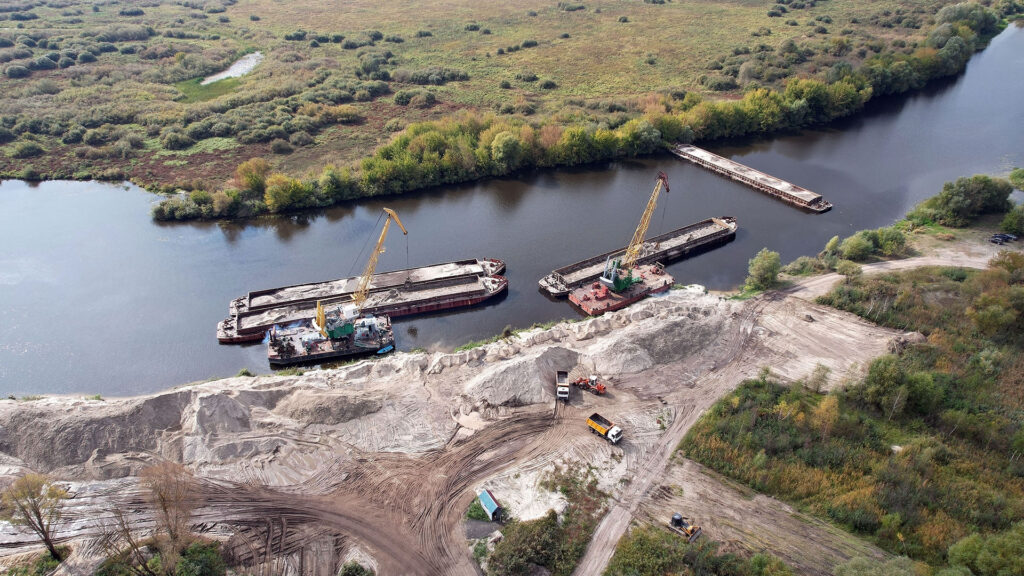
Sediment Management and Containment: Preventing Contamination and Silt Dispersion
Proper sediment management is critical to minimizing environmental impact during river dredging. Without adequate containment measures, disturbed sediment can spread, leading to water pollution, habitat degradation, and increased turbidity. Dredging for rivers and lakes must incorporate silt curtains, turbidity barriers, and containment booms to control sediment dispersal and prevent contaminants from affecting surrounding ecosystems.
Additionally, sediment testing is essential before dredging begins. Some riverbeds contain heavy metals, chemicals, or organic pollutants that, if not handled properly, can reintroduce toxins into the water. By implementing strict sediment management protocols, dredging operations can effectively remove unwanted materials while protecting water quality and aquatic habitats.
Eco-Friendly Dredging Technologies: Low-Impact Methods and Sustainable Practices
Advancements in dredging technology have made it possible to conduct river dredging with minimal environmental disruption. Eco-friendly dredging methods, such as hydraulic dredging and precision suction dredging, reduce sediment disturbance and improve efficiency. These techniques allow operators to selectively remove sediments while preserving the integrity of the surrounding environment.
In addition, dredging for lakes and rivers can incorporate energy-efficient equipment that lowers emissions and fuel consumption. Electric or hybrid-powered dredgers, automated sediment monitoring systems, and real-time data analysis tools contribute to more sustainable dredging operations. By adopting low-impact technologies, dredging projects can balance waterway maintenance with long-term ecological health.
Water Quality Monitoring: Testing for Pollutants Before, During, and After Dredging
Maintaining water quality is a top priority in dredging for rivers and lakes, as excessive sediment disruption can introduce pollutants and reduce oxygen levels in aquatic ecosystems. Comprehensive water quality monitoring should be conducted before, during, and after dredging to assess potential contamination risks and ensure regulatory compliance.
Key parameters such as turbidity, pH levels, dissolved oxygen, and pollutant concentrations must be regularly measured to detect any adverse effects. If water quality degradation is observed, dredging operations should be adjusted, or mitigation strategies should be implemented to minimize environmental harm. Ongoing monitoring allows for adaptive management, ensuring that river dredging activities align with environmental safety standards.
Minimizing Disruption to Aquatic Ecosystems: Protecting Fish Habitats and Biodiversity
One of the main concerns about dredging rivers and lakes is the potential disruption to aquatic life. If dredging is not carefully planned and executed, fish spawning grounds, wetlands, and benthic habitats can be severely impacted. To minimize ecological disturbances, dredging schedules should align with fish migration and breeding seasons, avoiding peak reproductive periods.
Additionally, specialized dredging equipment designed to reduce noise, vibration, and sediment displacement helps protect sensitive aquatic species. Creating buffer zones and maintaining undisturbed sections of the waterway can also provide refuge for fish and other wildlife. By prioritizing habitat conservation, river dredging can be performed with minimal harm to biodiversity.
Waste Disposal and Site Rehabilitation: Proper Handling of Dredged Materials and Restoring Ecosystems
Once river and lake dredging is complete, proper disposal or reuse of dredged material is essential for environmental sustainability. Contaminated sediment must be treated and disposed of at designated sites to prevent further pollution. When feasible, clean dredged material can be repurposed for shoreline restoration, land reclamation, or wetland creation, contributing to ecosystem recovery.
Site rehabilitation efforts should also focus on restoring native vegetation, stabilizing riverbanks, and improving habitat conditions. Replanting aquatic plants and implementing erosion control measures help reestablish ecological balance and prevent further degradation. By integrating responsible waste management and rehabilitation strategies, river dredging can support both waterway maintenance and long-term environmental health.
Advanced Safety Technologies in River Dredging
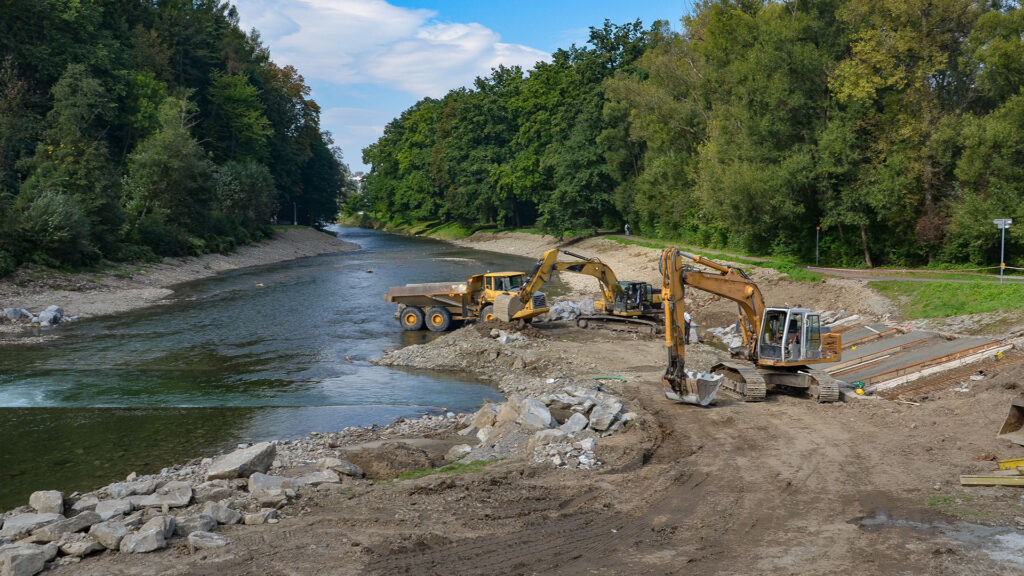
Automated and Remote-Controlled Dredging Systems: Reducing Human Risk in Hazardous Environments
Advancements in dredging technology have significantly improved safety by minimizing direct human involvement in high-risk environments. Automated and remote-controlled dredging systems allow operators to manage dredging for rivers and lakes from a safe distance, reducing exposure to strong currents, unstable sediments, and underwater hazards. These systems use robotic arms, automated suction heads, and AI-driven controls to efficiently remove sediment without requiring manual intervention in dangerous areas.
Remote-controlled dredgers are particularly useful for hazardous sites with contaminated sediment, as they prevent workers from direct contact with toxic materials. Additionally, these systems improve precision in river dredging, allowing for more controlled sediment removal while maintaining worker safety. By integrating automation into dredging operations, companies can significantly lower the risk of workplace injuries and enhance operational efficiency.
Real-Time Monitoring and AI Integration: Enhancing Safety and Operational Efficiency
Real-time monitoring systems powered by artificial intelligence (AI) are revolutionizing safety in river dredging. These technologies provide instant data on water quality, sediment levels, and dredger performance, allowing operators to make adjustments as needed to maintain safe and efficient operations. AI-driven analytics can predict potential equipment failures, detect unsafe conditions, and optimize dredging patterns to minimize disruption to aquatic ecosystems.
Dredging for rivers and lakes benefits greatly from AI integration, as it reduces the reliance on manual oversight and increases precision. Automated alerts for sediment dispersion, machine overheating, or water contamination help crews respond proactively to potential issues. By leveraging real-time monitoring and AI-driven insights, dredging operations can maintain compliance with safety standards while improving overall project efficiency.
GPS and Sonar Technology for Precision Dredging: Minimizing Environmental Disturbance
Precision is critical in river dredging to ensure that only necessary sediment is removed while minimizing environmental impact. GPS and sonar technology have become essential tools for accurate dredging, allowing operators to map underwater topography and track dredging progress with pinpoint accuracy. These technologies help avoid unnecessary excavation, protect fish habitats, and prevent excessive sediment disturbance.
High-resolution sonar imaging provides detailed visuals of the riverbed, identifying obstacles and sensitive areas that should be preserved. GPS-guided dredgers ensure that dredging for lakes and rivers follows pre-determined coordinates, reducing the likelihood of unintentional damage to aquatic ecosystems. By using these advanced positioning technologies, dredging projects can achieve optimal results while maintaining environmental sustainability and safety compliance.
Best Practices for Safe and Sustainable Dredging Operations
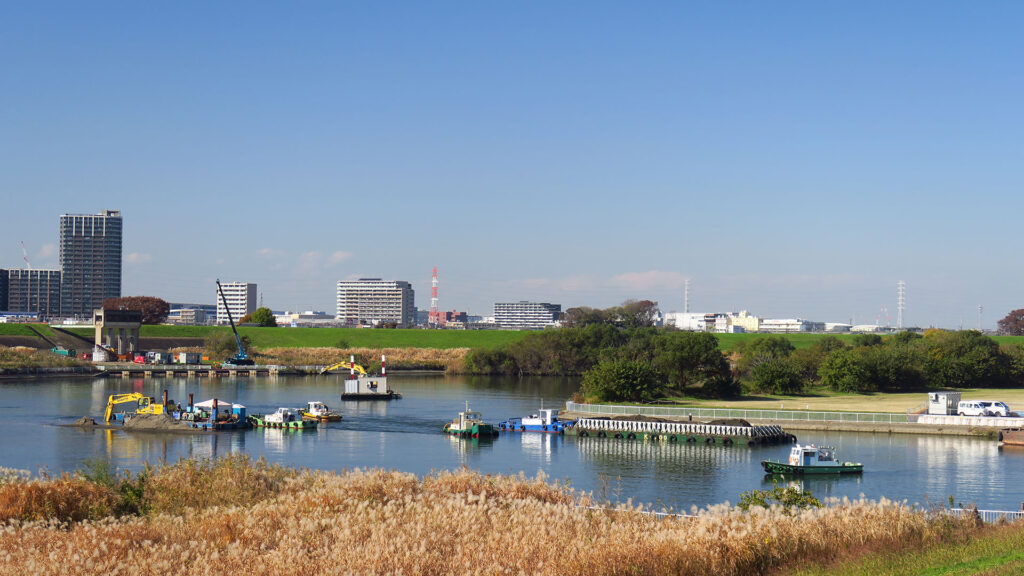
Pre-Dredging Site Assessments and Environmental Impact Studies
Thorough site assessments and environmental impact studies are essential for ensuring safety and sustainability before initiating any river dredging project. These evaluations help determine the sediment composition, potential contaminants, and ecological sensitivity of the area. By identifying risks early, dredging for rivers and lakes can be planned with strategies to minimize environmental disruption and maintain water quality.
Environmental impact studies also assess the potential effects on aquatic habitats, fish populations, and surrounding communities. Regulatory agencies often require these assessments to ensure compliance with environmental protection laws. Implementing best practices based on pre-dredging research helps prevent unintended damage to ecosystems and ensures that the dredging process aligns with sustainable waterway management goals.
Implementation of Safety Audits and Regular Inspections
Routine safety audits and equipment inspections are critical to maintaining a secure working environment during river dredging operations. Heavy machinery, including dredgers, pipelines, and auxiliary equipment, must undergo regular maintenance checks to prevent mechanical failures that could lead to accidents or environmental contamination. Inspections ensure that all safety systems, such as emergency shutoffs and sediment containment measures, are functioning correctly.
In addition to equipment checks, workplace safety audits help identify potential hazards for crew members. Ensuring that workers are properly trained, wearing the necessary personal protective equipment (PPE), and following operational protocols reduces the risk of injuries. By implementing a structured safety inspection program, dredging for rivers and lakes can be conducted with greater efficiency and adherence to regulatory standards.
Coordination with Local Authorities and Environmental Agencies
Collaboration with local authorities and environmental agencies is a key component of responsible river dredging. Permits and regulatory approvals must be obtained before beginning dredging activities to ensure compliance with water management laws. Agencies such as the U.S. Army Corps of Engineers (USACE), the Environmental Protection Agency (EPA), and local waterway commissions oversee dredging for lakes and rivers to prevent habitat destruction and pollution.
Maintaining open communication with regulatory bodies allows for better planning and oversight throughout the dredging process. In some cases, local authorities may require mitigation strategies such as sediment containment barriers, water quality monitoring, or habitat restoration plans. Coordinating with environmental organizations ensures that dredging operations align with conservation goals and long-term water resource management strategies.
Community Engagement and Transparent Reporting on Dredging Activities
Public awareness and community involvement are essential for the success of any river dredging project, especially in areas where dredging impacts local businesses, fisheries, and recreational activities. Keeping stakeholders informed about project timelines, environmental safeguards, and expected outcomes helps build trust and reduce concerns about potential disruptions.
Transparent reporting on water quality monitoring results, sediment disposal plans, and ecological impact assessments fosters accountability in river and lake dredging. Hosting public meetings, providing online updates, and collaborating with local conservation groups can help address concerns and demonstrate a commitment to sustainable dredging practices. By engaging with the community and maintaining transparency, dredging companies can enhance public support while ensuring that their operations meet safety and environmental standards.
Conclusion
Implementing strict safety protocols and sustainable practices in river dredging is essential to protecting both workers and the environment. By leveraging advanced technologies, conducting thorough site assessments, and adhering to regulatory guidelines, dredging for rivers and lakes can be performed with minimal risk. Worker safety measures, including proper training, personal protective equipment, and emergency preparedness, ensure that dredging crews operate efficiently while reducing accidents. At the same time, environmental protection strategies such as sediment containment, water quality monitoring, and eco-friendly dredging technologies help maintain the health of aquatic ecosystems and prevent unnecessary habitat disruption.
A responsible approach to river dredging also involves continuous oversight, collaboration with regulatory agencies, and engagement with local communities. Regular safety audits, transparent reporting, and adherence to best practices foster accountability and compliance with environmental standards. As dredging for lakes and rivers continues to evolve, the industry must prioritize innovation and sustainability to balance waterway maintenance with long-term ecological preservation. By integrating these safety and environmental measures, dredging operations can support navigation, flood control, and ecosystem restoration while minimizing their impact on the natural world.


